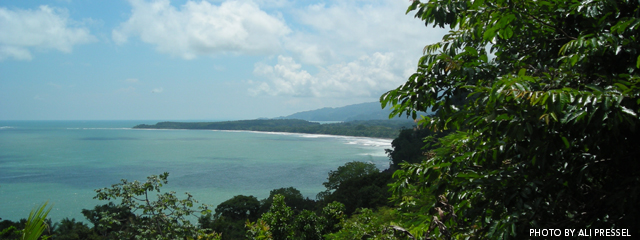The Holbrook Explorer

Threatened Birds in Costa Rica
Threatened Birds in Costa Rica
One in eight of the world’s bird species is deemed globally threatened, and the fortunes of 213 critically endangered species are now so perilous that they are at risk of imminent extinction, according to BirdLife International. Professionals think that some of these species that have not been sighted for many years may have already succumbed to extinction. Costa Rica is a very prominent destination for birding trips at Holbrook. Below are five threatened species of birds that are native to Costa Rica:
1. Black-cheeked Ant-tanager (Habia atrimaxillaris) The Black-cheeked Ant-tanager is usually found at about 18-19 cm long. It has a mostly black-colored head with a pink throat and dark red irises. This bird inhabits a highly restricted range in southwest Costa Rica. It lives in dense lowland forest, advanced secondary growth, streamside woodland and sometimes selectively logged forest, palm trees and beach-front scrub. This species mainly feeds on insects and berries. The population is decreasing due to the logging of a majority of the forest where these birds live and habitat loss outside protected areas.
2. Turquoise Cotinga (Continga ridgwayi) The Turquoise Cotinga is found at about 17.5 cm long. Its colors are bright blue, turquoise-blue, violet, black and white. This species inhabits the Pacific coast of central and western Costa Rica and can be found in the canopy and borders of humid forest, secondary growth and tall trees in shade of coffee plantations. It occurs mainly below 900 m in Costa Rica. A decline in population is due to forest destruction and degradation.
3. Bare-necked Umbrellabird (Cephalopterus glabricollis) The Bare-necked Umbrellabird usually doesn't exceed 41 cm. It has a glossy, black color with a large patch of bright red skin that hangs from the upper throat. It also has feathers that curl forward, hence its name. This species is usually found on fruit trees or by locating display arenas through calls. They eat mostly fruit, large insects and frogs. In the breeding season, this bird can be found in the mountains of Costa Rica, and in the non-breeding season, it can be found in the foothills. The population is suspected to be declining rapidly because of habitat loss and degradation.
4. Mangrove Hummingbird (Amazilia boucardi) The Mangrove Hummingbird is a very small species at about 9.5 cm. Its main colors are green and bronze. This species is local on the Pacific coast of Costa Rica, inhabiting mangrove forests where it feeds mostly on flowers. The population is suspected to be declining because of clearance and degradation of mangrove forests in the area.
5. Red-fronted Parrotlet (Touit costaricensis) The Red-fronted Parrotlet is around 17.5 cm long. Most of its body is bright green with some red and yellow color by the head, wings and tail. This species is known to live in middle to high elevations in Costa Rica. It breeds in the dry season in very wet montane forests at elevations of 700-1500 m. This bird is a frugivore. The Parrotlet is thought to be declining at a moderate rate because of the clearance of its forest habitat.
These are just five of the many species that are threatened in Costa Rica. There are conservation efforts in action to help save some of these birds, but not for all. Here are guidelines tips on ethical birding from the American Birding Association that Holbrook follows about in order to help protect the many threatened species.
1. Promote the welfare of birds and their environments. Support the protection of important bird habitat, exercise restraint and caution while birding to avoid stressing the birds out, be cautious with recording and lighting devices, be careful when advertising the locations of threatened birds, and try not to disturb their habitats, if possible.
2. Respect the law and the rights of others. Never trespass on private property. You should also follow all rules and regulations governing use of roads and public areas and be courteous of other people around you.
3. Ensure that feeders, nest structures, and other artificial bird environments are safe. Keep these structures clean and away from predators like cats and other animals.
Keeping these guidelines in mind, you will be able to have a safe birding experience both for you and the threatened species you may be watching.
